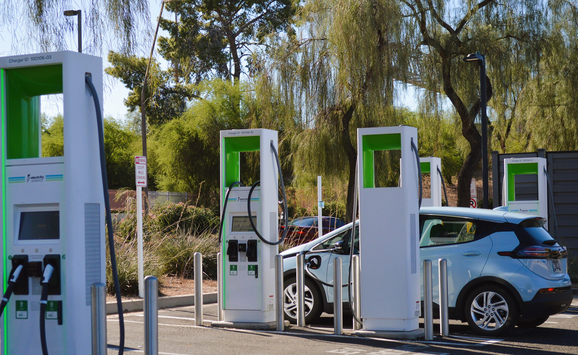Our country is about to enter the most important period this decade for the future of transportation and its associated greenhouse gas (GHG) emissions. Fuel economy and GHG standards for both light-duty vehicles and heavier trucks are slated to tighten, reducing not only oil use but also GHG emissions. There is significant uncertainty about how much truck standards will tighten, but fuel economy standards for light-duty vehicles are due to become much stricter over the next decade, cutting GHG emissions from the new car fleet to close to half of their current level by 2025. A mandated midterm review will reevaluate the basis for these tighter standards, drawing on evidence and studies since the original evaluation was performed.
The light-duty vehicle standards were mandated in 2012, by the US Environmental Protection Agency (EPA) for GHGs and by the Department of Transportation’s National Highway Traffic Safety Administration (NHTSA) for fuel economy. The standards are “harmonized” by the two agencies (see note below) and will continue to tighten through 2025 culminating in a 54.5 mpg new car fleet average standard (relative to a 2011 standard of 27 mpg), and the reduction of GHGs by 50 percent. Part of the negotiation over the final rule was that the standards would be revisited through a full evaluation of the last years covered by the rule, model years 2022–2025 by November 15, 2017, with final decisions by the agencies by April 1, 2018—the mid-term CAFE review.
The next several years will be a key time for research that can enhance this evaluation and inform future policies to reduce GHG emissions and oil use from the light duty fleet. Major questions remain about consumer and manufacturer responses to the regulations and about how the costs and benefits of the rule should be estimated. Thus, for the research community, this evaluation is an important invitation to perform research that can aid the agencies in their deliberations. And, given the timeline, now is the time to start. Accordingly, RFF held a workshop with experts from academia, nonprofits, and industry, as well as from the key agencies and other government staff with responsibilities affecting the review to identify major research areas and projects that address key issues in the debate. Interested readers can learn about the proceedings, see the presentations made, and get a summary of the discussion at the workshop webpage.
The key points to come out of the workshop are as follows:
- Consumer demand for fuel economy and alternative technologies is quite heterogeneous across individuals and this fact has implications for policy.
- Not enough is known about manufacturer responses to tighter standards. Studies are needed considering their recent behavior, and on how to stimulate innovation and technology adoption.
- Little is known about the distributional consequences of tighter standards.
- Improvements are needed in the practice of cost–benefit analysis: for instance, how to define the no-policy scenario, against which costs and benefits of tighter standards are compared.
- More scrutiny is due to how alternative fuel vehicles are treated under the new standards.
This is the first in a series of blog posts by RFF's transportation team that will address some of the key issues, including the efficiency and incentives under the new footprint standard and the existence, size, and implications of the energy efficiency paradox.
Note: EPA's standards project an emissions rate reduction from the light-duty fleet from 250 grams of carbon dioxide per mile (g CO2/mile,) (or 35 mpg) in 2016, to 163 grams CO2/mile or 55 mpg in 2025, and are considered final unless they are changed as part of the midterm review process. The estimate of 55 mpg assumes that fuel economy increases account for all of the emissions rate reductions. including those from non-engine sources. NHTSA published complementary fuel economy targets of about 35.5 mpg in 2016 and 49.1 mpg in 2025, though the NHTSA standards are only finalized through 2021.







